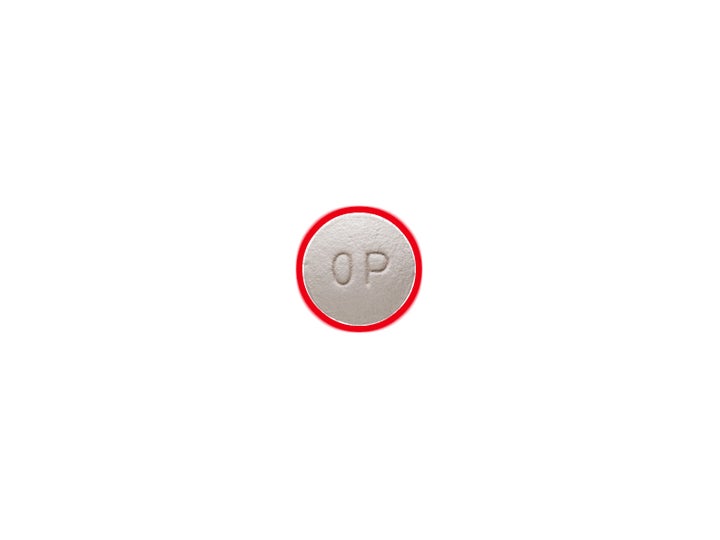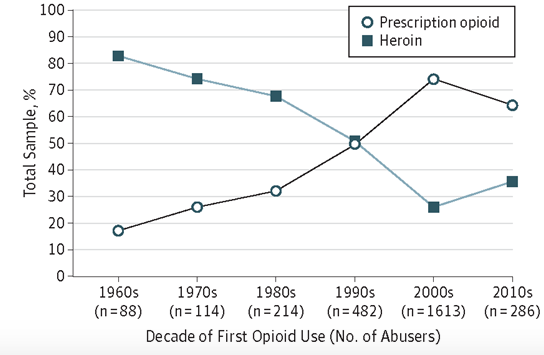
Dr. Abigail Zavod, when speaking about the opioid crisis during a grand rounds presentation at Dartmouth, likened it to a “20-armed octopus covered in vaseline.” The metaphor is accurate; effectively tackling this epidemic requires a multi-pronged approach, and each prong needs to be properly balanced.
There is no easy way to fix this. We are at a point now where the response needs to be meticulous and symphonic in its execution to be successful. Each measure has to be adaptive ― pushing or pulling too hard can leave a devastating impact.
Address the Source
In the early ’90s, the American Pain Society ran a successful campaign to label pain itself as a vital sign. This was framed as a way to combat potential clinical negligence in the area of pain relief. In 2001, the joint commission and other large health care organizations embraced the idea. As pain began to be treated as an entity unto itself, prescription rates of opioid pain pills rose. This dramatic shift in the approach to pain management converged with the release of the future king of opioid painkillers: OxyContin.
While it’s unfair to place the blame of the opioid epidemic solely on big pharma, their role in ushering in the crisis is difficult to overstate. Within big pharma, and one company specifically ― the Sackler family-owned Perdue Pharma ― deserves the lion’s share of the blame. In 1996, Purdue introduced OxyContin, a time-released formulation of oxycodone. Oxycodone is molecularly identical to heroin. Through citing unreliable studies, paying prominent physicians to espouse on the benefits of long-term opioid usage, conducting lavish seminars, promoting aggressive sales tactics, and spending hundreds of millions in marketing and advertising, Purdue successfully changed the narrative on opioids. What was largely seen as a medication for severe cancer pain was transformed into a staple of more quotidian pain management. As an article published in The American Journal of Public Health by Dr. Art Van Zee points out, OxyContin sales went from $48 million in 1996 to nearly $1.1 billion in 2000—over a 2,000 percent increase.
As the prescription of OxyContin expanded exponentially, so too did the factors precipitating heroin addiction. In the ’60s, as is shown in an article published by Theodore J. Cicero, Ph.D. in JAMA Psychiatry, 80 percent of heroin users surveyed said their first opioid usage was heroin itself. As this figure by Cicero et. al. clearly displays, a significant shift occurred in the mid-’90s:

By the year 2000, the ratio flipped entirely, with 75 percent of heroin users reporting their first experience with an opioid was a prescribed medication. Purdue Pharma sold opioids to the masses, they claimed they were safe and largely non-addictive. As Patrick Raddick Keefe pointed out in a piece in The New Yorker on the Sacklers and Purdue Pharma, sales reps marketed OxyContin as a medication to “start with and stay with.” Purdue Pharma’s role in jumpstarting the opioid crisis was, at the very least, catastrophically irresponsible.
So one of the first steps in addressing this crisis is recognizing the unregulated power and influence big pharma holds. Companies simply should not be legally allowed to market this aggressively and essentially use bribes to push their medications. This is not how medicine should work, and it’s indicative of systemic issues within our healthcare system.
The Sacklers are brilliant medical marketers, and they spare no expense when attempting to expand their influence. Again, according to Keefe’s New Yorker piece, doctors were wined and dined at seminars in tropical locales, and the doctors who attended these seminars were more than twice as likely to prescribe OxyContin. Of course, physicians need to be more judicious as well, and being aware of the manipulative tactics and practices of companies like Perdue is a good start.
Strike a Precise Balance of Regulation
Due to the prevalence of this crisis, there are calls to eliminate opioids entirely and regulate their dispersal to death. It’s easy to see why this approach has gained traction, but we have to be really careful here. While it is certainly true that these medications were over-prescribed, there are now hordes of Americans, many of whom are suffering from chronic pain, who rely on them. If we simply remove access entirely, we are pushing them towards illicit substances. And it’s there, on the street, where the majority of overdoses occur. As the Times pointed out, of the estimated 64,000 people who died from overdoses in 2016, over 20,000 were caused by fentanyl, which is a 540 percent increase over only three years—and heroin is not far behind.
With overdose deaths ballooning every year, the primary concern here is savings lives, and to save lives, we cannot just delete opioids. As Keegan Hamilton reported in Vice, opioid prescribing rates are falling due to a combination of CDC guidelines and state regulations, but as they have fallen the numbers of overdoses have increased. There has to be a significant tapering period and even more importantly, there needs to be access to rehabilitation and addiction services.
Increase Access to Treatment
This opioid crisis is a health care crisis, and one component in combating it relies upon access to treatment. We need to ensure all Americans have access to evidence-based addiction treatment services, and that is far from the case now. One’s financial standing shouldn’t determine the odds of defeating addiction, but to a large degree, that is how our system is currently constituted.
Medication-assisted treatment, as the PEW pointed out, has been more effective in keeping people in therapy and in decreasing their use of opioids. Medications like Suboxone (buprenorphine and naloxone), Subutex (buprenorphine) and Vivitrol (naltrexone) which help wean people off opioids, should be readily available to everyone. But in many regions, medication-assisted treatment facilities are few and far between. Again, as the PEW notes, “53 percent of U.S. counties do not have a physician with the special waiver required to prescribe buprenorphine.” While there is some public assistance available, and addiction treatment expanded under the Affordable Care Act, we are still not where we need be. Furthermore, while, as the Times noted, every state has passed legislation increasing access to Naloxone (the overdose-reversal drug) it should really be made available over the counter, as this would increase access dramatically across the board and save thousands of lives.
Eliminate The Stigma of Addiction
If we look back to the crack epidemic of the ’80s, we see a drug crisis defined by dehumanization and mass incarceration. Up until the Fair Sentencing Act of 2010, the crack to cocaine sentencing ratio was 100:1, even though the drugs are chemically the same. This led law enforcement to lock up poor African-Americans at an alarming rate for obscenely long sentences while many cocaine users, people who were generally white and well-off, received comically light sentences.
The reign of crack decimated neighborhoods and destroyed lives, and the reverberations are still felt in large pockets of this country. As the opioid crisis expanded to fully encompass white America, a shift in understanding seemed to occur. The rhetoric changed. Drug addiction, to a large degree, lost its moral failure stigma. So we need to continue to acknowledge the failures of the past and need to work to repair the damage done by intrusive, draconian, race-driven policies. And there is still a lot of room for improvement going forward.
Physicians need to speak with their patients about addiction and work to create a judgment-free zone wherein which a patient feels comfortable acknowledging that he/she may be developing, or already have a problem. We also have to work to increase the general access to mental health services while striving to dismantle the associated stigma in that arena as well, as illicit drug use is often precipitated by a co-morbid mental illness. People in this country need to feel as comfortable receiving treatment for a mental health issue as they do a physical malady, whether that issue is an addiction, or a mood disorder, depression, anxiety or anything else.
Legalize Medical Marijuana Everywhere
Research studies have found that marijuana is effective in combatting chronic pain, and yet medical marijuana is only legal in 29 states and Washington, D.C. The fact that in many states it’s much easier to get a prescription for a substance (oxycodone) that is essentially heroin than it is to get a prescription for marijuana quite simply does not make sense.
Medical marijuana should be available in every state, it is far safer and less addictive than any opioid painkiller. Unfortunately, the gains made over the last decade in this realm have come to a screeching halt under Sessions’ DOJ. Regardless, the fight needs to continue.
Stop the Flow of Fentanyl
As I mentioned earlier, fentanyl was used in 20,000 of the estimated 64,000 overdose deaths last year, no other substance was as prevalent. While fentanyl is similar to morphine and its product heroin, according to the National Institute on Drug Abuse, it is 50-100x more potent than morphine. Fentanyl is a synthetic product and its danger derives from its raw power. Fentanyl overdoses can be so severe that as many as four doses of Naloxone have to be administered in certain scenarios. And fentanyl is cheap and at times easier to get than heroin, so dealers sometimes substitute one for the other. Of course, due to the difference in potency, the results are often deadly. Only 2 milligrams of fentanyl can constitute a lethal dose, while with heroin it usually takes about 30 milligrams. To illustrate how small an amount 2 milligrams is, the New Hampshire State Police Forensic Laboratory released a photo comparing the lethal doses of both substances. A fatal dose of fentanyl looks like a few scattered grains of salt.
Most of the fentanyl coming into the United States comes from China, and much of it is purchased on the dark web. Though there have been large busts and some of the most infamous marketplaces have been shut down, the trade continues to find portals to success. Much of the fentanyl that hits the streets reach the United States through the mail and many sellers guarantee they will resend the package is it is intercepted by customs. So here’s where the crisis gets international. China banned the production of fentanyl in 2016 (along with over 100 other drugs), but labs are simply altering the chemical composition slightly and billing the products as fentanyl analogs. This creates a constantly evolving race where the DEA moves to ban the new substance as quickly as possible, but as soon as they do, something else is just behind it.
Though we should certainly do everything we can to stop all online sales of fentanyl and fentanyl analogs and limit the ease at which dealers can obtain the drug through the mail, it is unlikely we will ever stop the flow of these drugs completely. The best approach is to limit the influx of fentanyl and close loopholes while simultaneously expanding funding for treatment centers.
Every 19 minutes, someone in America dies of a drug overdose.
Drugs now kill more people than cars and guns.
Now is the time to act, and incrementalism will not suffice.
Previously published on The Overgrown.
FOLLOW:: @jmechanic LIKE:: @JesseIanMechanic